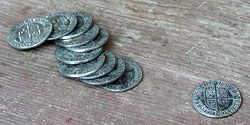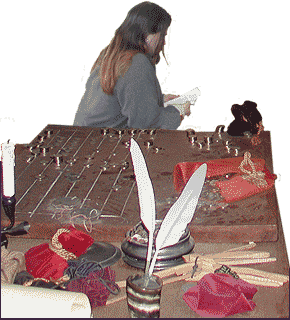 |
Hard Walls Built With Big Money |
For cost of materials and labor, the least expensive fort was
constructed almost entirely of earth. But the
earthen fort required maintenance – lots of it. Otherwise, in four
to ten years, it had so eroded and settled that it was worthless. If
a community or garrison didn’t want to keep up with that maintenance,
stone and/or brick could be a major component in the construction – at
breathtaking expense, of course.

An artillery fort buttressed, supported and faced with stone and/or brick cost approximately ten times as much as an equivalent sized fort all of earth.
In addition to a significant cost for materials, the labor came more dearly. Skilled craftsmen such as masons, carpenters, stone cutters, and brickmakers were required in addition to wielders of shovels and wheel barrows.
 The time between planning and declaring such a fort finished was
as long as 20 years. If the prospect of war hovered right at
the horizon, time became an out-of-reach commodity, especially if
construction was slowed by an insufficient supply of money.
The time between planning and declaring such a fort finished was
as long as 20 years. If the prospect of war hovered right at
the horizon, time became an out-of-reach commodity, especially if
construction was slowed by an insufficient supply of money.
Such quality of fortification could only be afforded by the amply funded. A small state such as Siena simply could not withstand the outlay of money for what was required for a proper defense; Siena went bankrupt, unable to afford a relief army or crews for its warships to defend itself, and the city of Siena fell after a ten-month siege to Spanish and Florentine forces in 1555.
In 1542, plans had to be dropped to surround Rome with 18 bastions after the projected expenditures were taken into account. Fifty years later, on the Venetian border, Palmanova got only nine bastions instead of the planned 12 because of cost. One can speculate that the masonry artillery fort contributed to the development of nation-states because the cost of needed defenses climbed out of fiscal reach for the small cities, duchies, and republics, which led to their domination by larger, more funded countries.
| Back |
Brick or Stone |
|
|
|